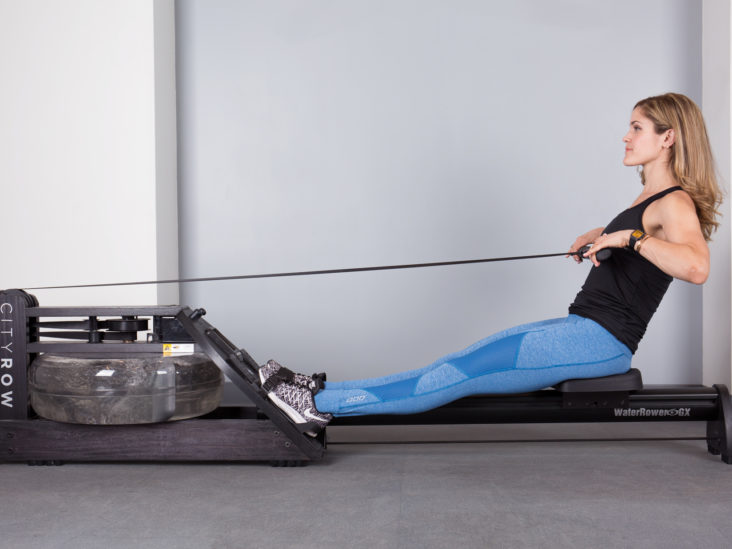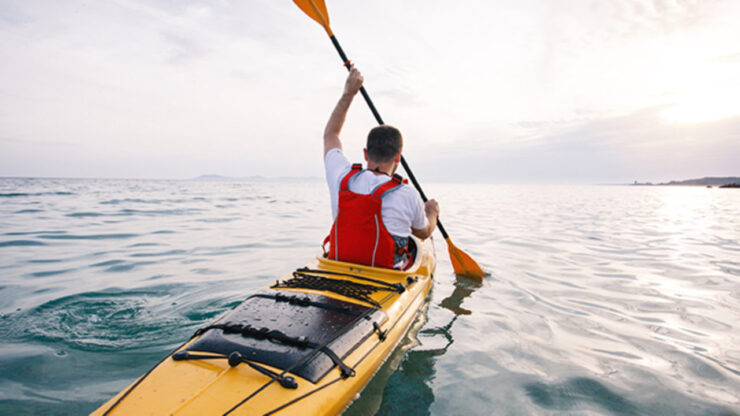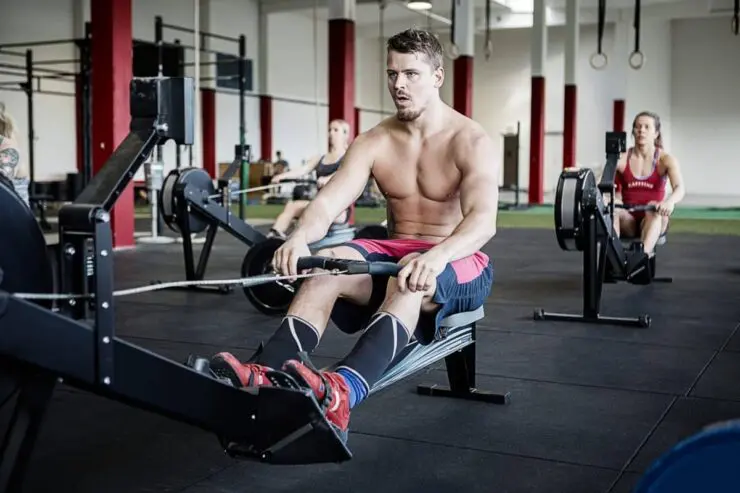While many paddlers are already fairly competent on the water, we may wish to improve our skills elsewhere but may not have the time or money to increase training plans or rent out and buy expensive specialist equipment. This may be especially true if we don’t even know how it works, how useful it will be, or how often we will use it. This is where the rowing machine comes in.
As a qualified canoe coach, here are my rowing machine workout tips.
Table of Contents
ToggleRowing Machine Workout For Paddlers

Almost every gym or developed clubhouse has some form of ergo; whether this would be a rowing machine or kayak ergo. The cheapest and most readily available option of these, however, would be the rowing machine – and although you may think that the different actions will create incorrect muscle memory, it may be a different story altogether.
The best and most effective training method is the HIT structure. Most competitive paddlers at the intermediate stage already train through this method but in case you are not sure it goes as follows:
- A high-intensity interval structure in which athletes sprint at a 100% out put for a short period of time.
- This is followed by a limited recovery time where the athlete works at approximately a 15% output but remains in constant motion.
- This structure is then repeated for either a previously decided upon and the specified number of times or until the athletes’ highest out put falls below 90% of their original speed.
This may seem complicated at first, but it can be easily understood and applied for all intermediate and developed paddlers. In short, the paddler must sprint for a short amount of time, say 30 seconds, which is then followed by a resting period, such as 60 seconds. This is then repeated a specified number of times, say 20 sets. In later sessions, the time frames can be altered to cater to the paddler’s abilities, aspiration goals, and areas of improvement. This can be again shortened to a general rule of thumb being rest, set, sprint.
The order of these words represents the order at which timings or quantities are altered as the paddler becomes more developed. For example, this could be altering the rest through a reduction of 5 seconds in the first week, followed by an increase of 2 sets in the next, and an increase in sprint time by 5 seconds in the third. This again can be adjusted to facilitate different paddlers, time frames, frequencies of sessions, and abilities.
Why Is A Rowing Machine Useful To Improve Your Kayaking Skills?

The usefulness of the rowing machine in this situation is its availability meaning that a higher frequency of sessions per week can be achieved. This leads to a quicker development and progression whilst also taking less time to ingrain muscle memories and neuro pathways. On many rowing machines, they themselves also come with an ingrained monitoring system and display screen.
This can be used for the monitoring of time frames and also output levels. By monitoring the paddlers’ sprint speed during the high intensity sessions, you can judge their top speed and at which point their output falls below 90%. On the first session, I would recommend allowing a calibration session in which the paddler performs at their highest output using the first model for as many repetitions as possible. You can use this as a baseline. Be aware that as you progress, the paddler’s overall top speed will increase so you may need to modify your ‘calibrated’ top speed every 3 to 4 weeks or so.
When training an intermediate or developed paddler, instead of a team leader board, you may wish to have a personal ‘leaderboard’. In this, you may wish to include top speeds for each week as well as a clear training plan for any upcoming weeks. This will usually be decided up to two months in advance but may be modified no later than one week before the changed session. This will form a sense of rigidity to the paddler’s training regime and help promote a determination to do better as well as give normality to the training.
It is important to drink a lot of water during training and, if you wish, you may want to add a small amount of salt to the water being consumed during training. This will stimulate electrolytes in the water and decrease the water potential of the fluid making it easier to consume and quicker to be absorbed into the body through osmosis. This will promote a healthier water and perspiration cycle in the paddler and help the body to strengthen and repair.
Conclusion
In conclusion, the rowing machine is a great alternative alongside on-water training for intermediate and developed paddlers in all disciplines and can also help analyze progress and speed more accurately in a more controlled environment.
Adelaide Gentry, a seasoned kayaking enthusiast and expert, is the driving force behind KayakPaddling.net. With over a decade of experience navigating the world’s most challenging waterways, Adelaide combines her passion for adventure with a deep knowledge of kayaking to provide insightful and practical guidance for paddlers of all levels.
Related Posts:
- Canoe vs. Kayak: Differences and Benefits You Need to Know
- 10 Best Solo Canoes 2025 - Unleash Your Inner Explorer
- 13 Best Kayak Covers 2025 - Keep Your Kayak Safe and Sound
- Heavy Duty Fishing: 11 Best Rods And Reels For Big Fish 2025
- 16 Best Kayak For Beginners 2025 - Kayaking Adventure Gear
- Best Kayak Dog Platforms, Seats, Deck, Attachments,…












